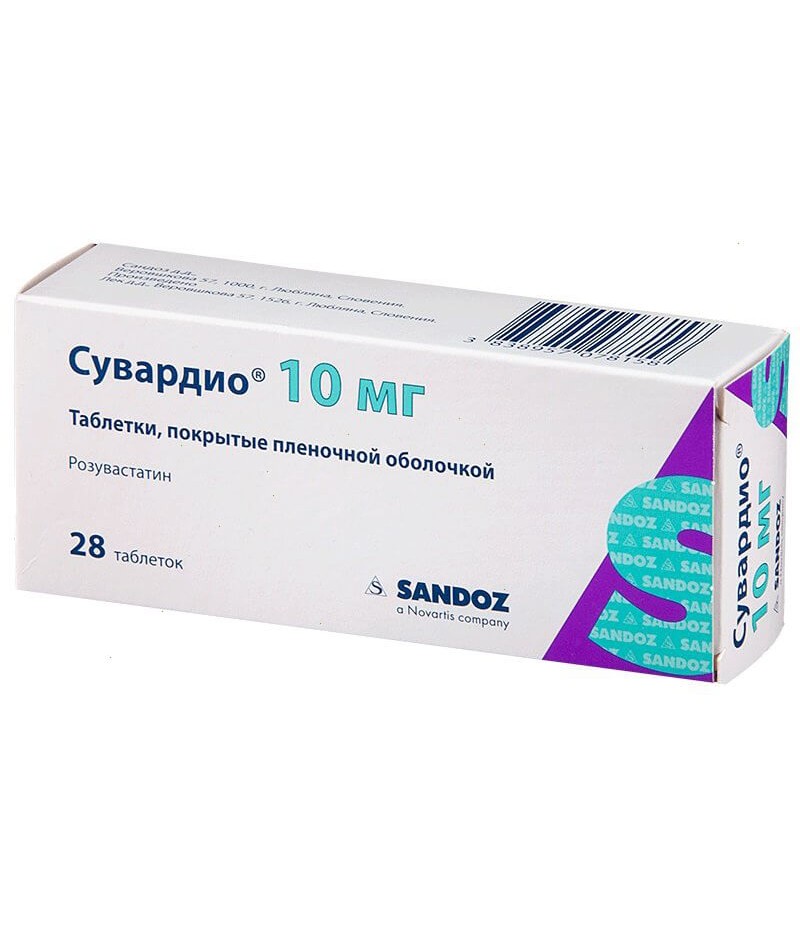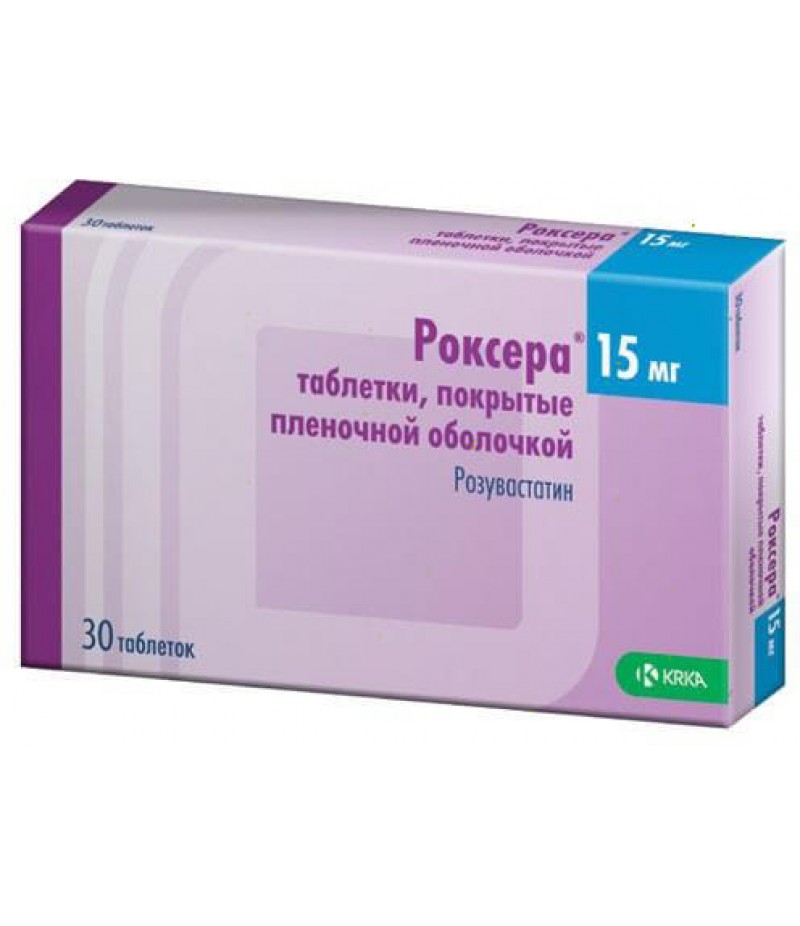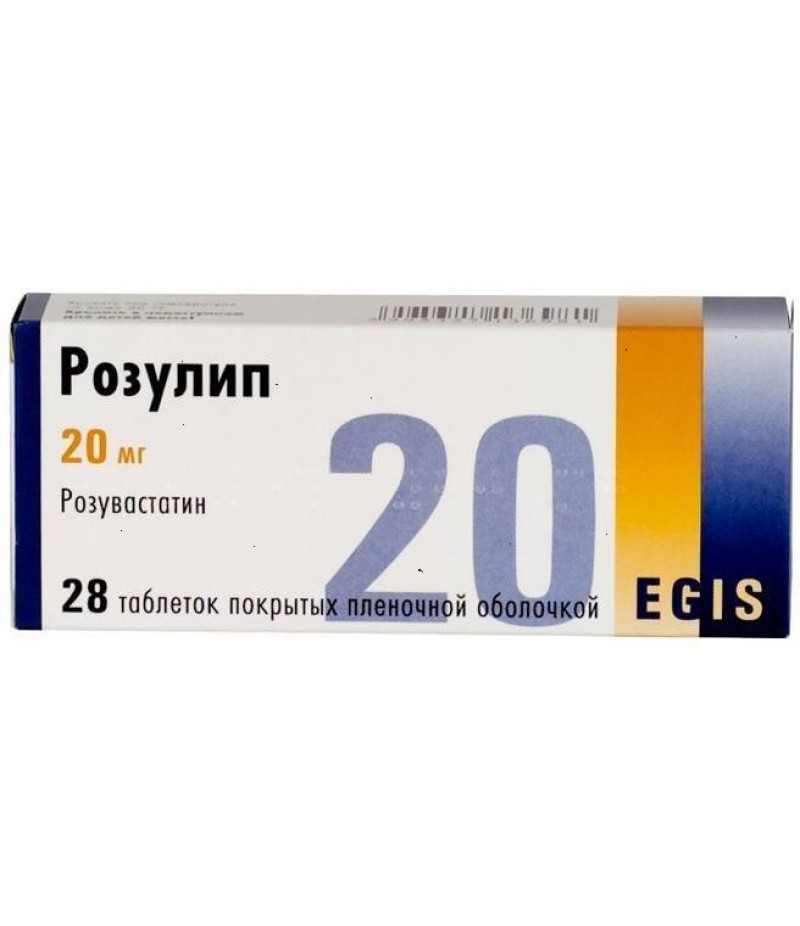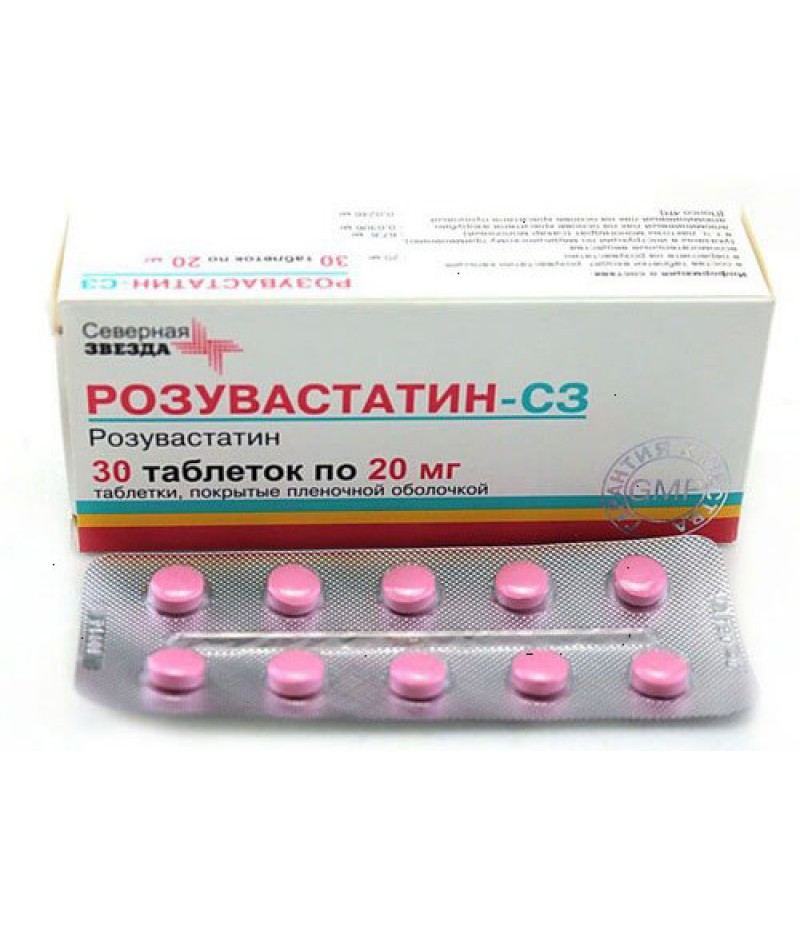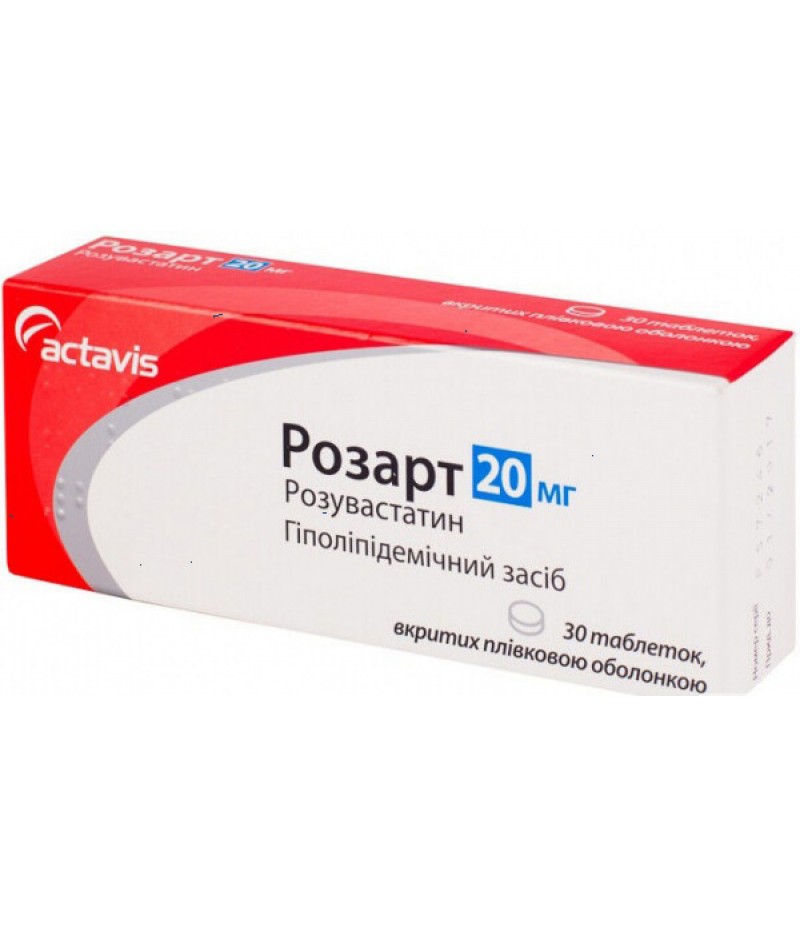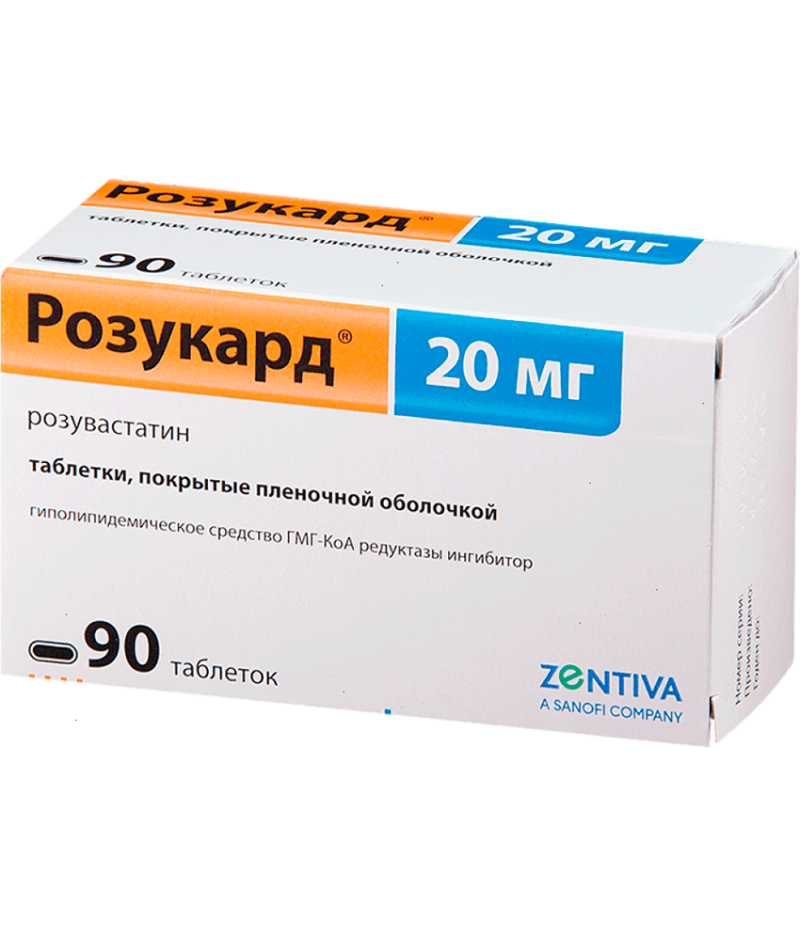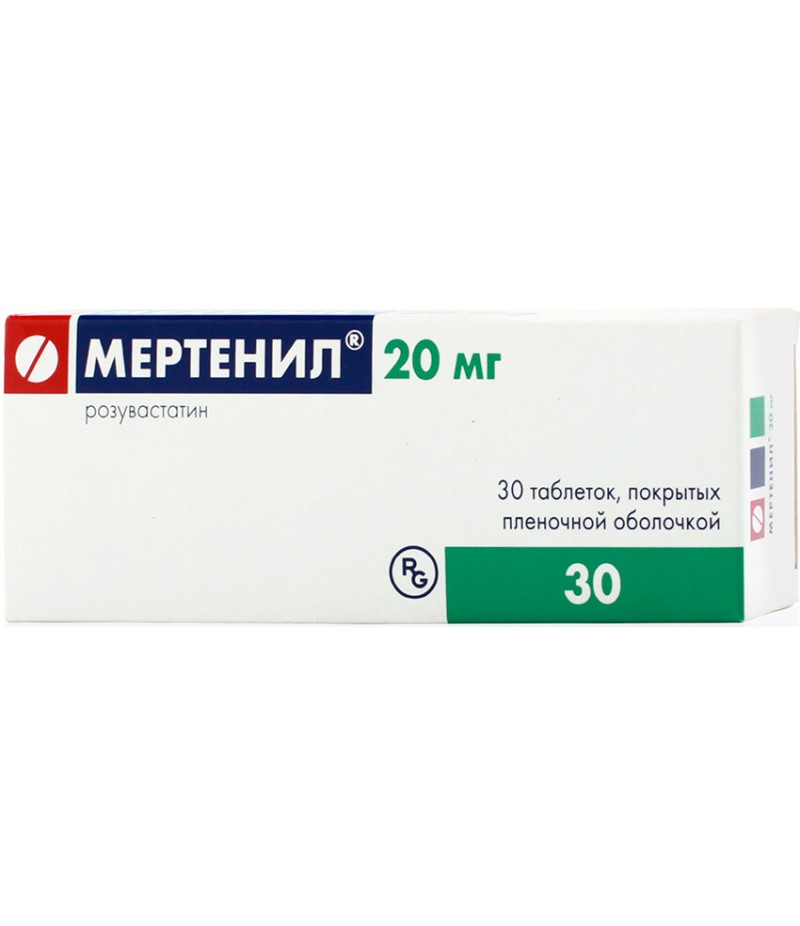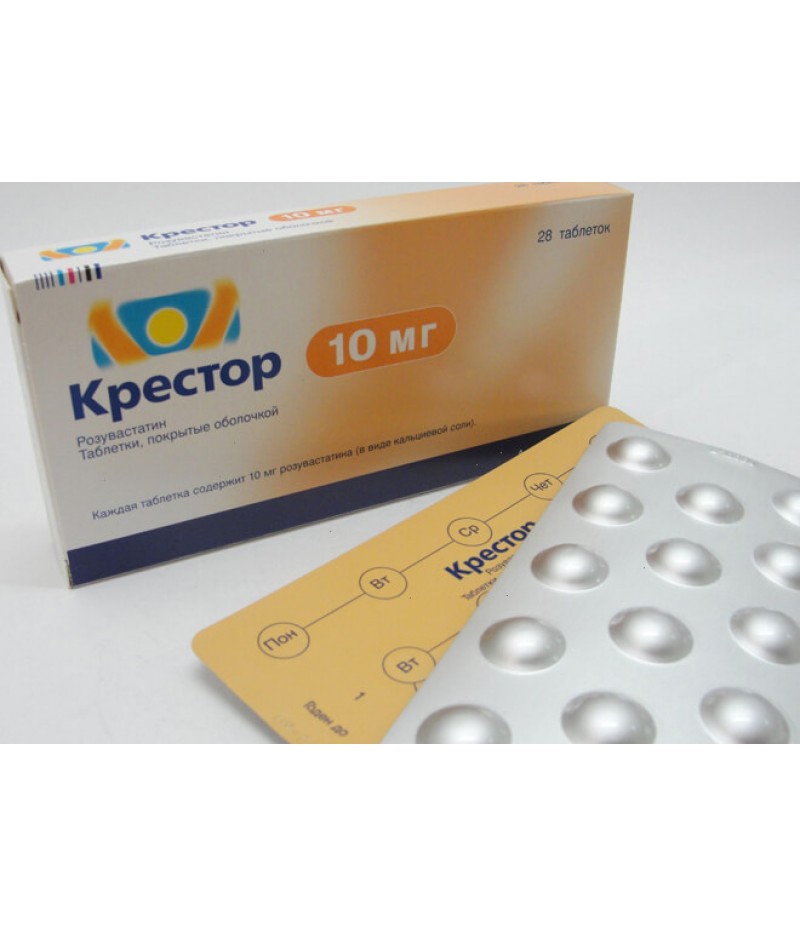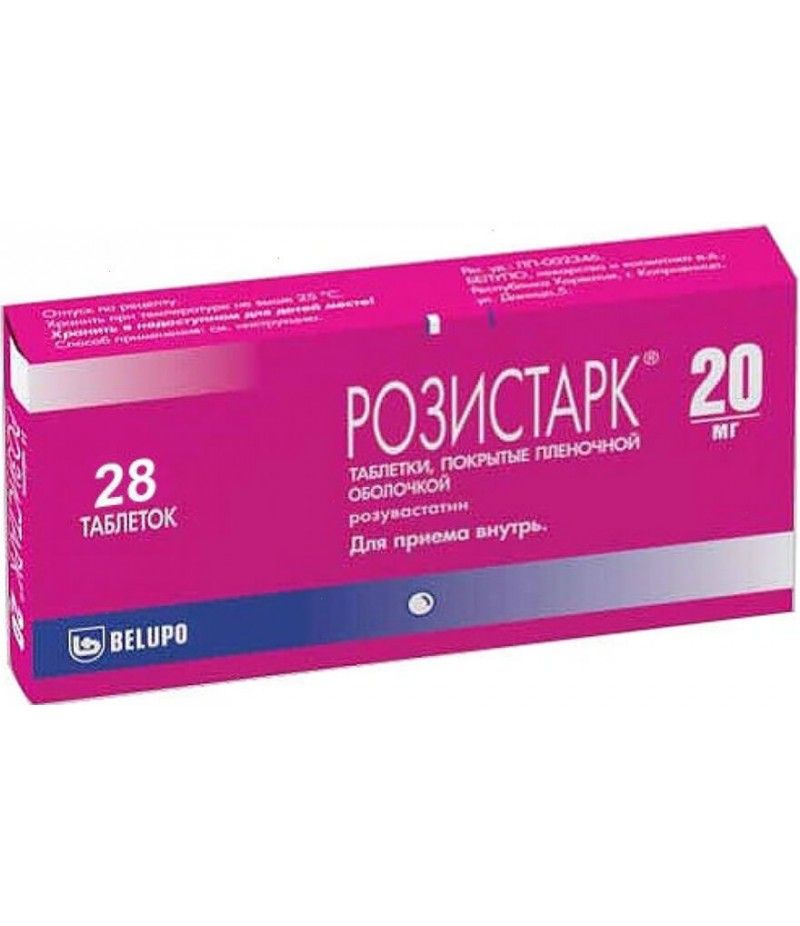Suvardio tabs 10mg #28
- $24.76
- 3 or more $24.55
- Availability:In Stock
Instruction for SuvardioYou can buy Suvardio hereComposition1 tab.Rosuvastatin calcium (in terms of rosuvastatin) 10 mgExcipients: anhydrous lactose - 53.69 mg, colloidal anhydrous silicon dioxide - 0.33 mg, microcrystalline cellu..
Tags: tabs
Instruction for Suvardio
You can buy Suvardio here
Composition
1 tab.
Rosuvastatin calcium (in terms of rosuvastatin) 10 mg
Excipients: anhydrous lactose - 53.69 mg, colloidal anhydrous silicon dioxide - 0.33 mg, microcrystalline cellulose, silicified - 27.5 mg, dry corn starch - 16.5 mg, talc - 1.1 mg, sodium fumarate - 0.88 mg.
The composition of the shell: hypromellose 2910 - 1.86 mg, mannitol - 0.15 mg, macrogol 6000 - 0.09 mg, titanium dioxide - 0.42 mg, iron (III) yellow oxide - 0.225 mg, iron (III) red oxide - 0.075 mg, talc - 0.18 mg , talc (polishing agent) * - 0.057 mg.
pharmachologic effect
Lipid-lowering drug
SUVARDIO, indications for use
- primary hypercholesterolemia according to Fredrickson's classification (type IIa, including familial heterozygous hypercholesterolemia) or mixed hypercholesterolemia (type IIb) as a supplement to the diet when diet and other non-pharmacological treatment methods are insufficient;
- familial homozygous hypercholesterolemia as an adjunct to diet and other lipid-lowering therapy (for example, LDL-apheresis), or in cases when such therapy is not sufficiently effective;
- hypertriglyceridemia (type IV according to Fredrickson's classification) as a supplement to the diet;
- to slow the progression of atherosclerosis as a supplement to the diet in patients who have been shown therapy to reduce the concentration of total cholesterol and LDL-C;
- primary prevention of major cardiovascular complications (stroke, heart attack, unstable angina, arterial revascularization) in adult patients without clinical signs of coronary heart disease (CHD), but with an increased risk of its development (age over 50 years in men older than 60 years in women, increased concentration of C-reactive protein (≥2 mg / l) with at least one additional risk factor, such as hypertension, low concentration of HDL-C, smoking, family history of early onset of CHD).
Contraindications for Suvardio
For a daily dose of 5 mg, 10 mg and 20 mg:
- hypersensitivity to rosuvastatin or any of the components of the drug;
- liver diseases in the active phase, including a persistent increase in the activity of "liver" transaminases, as well as any increase in the activity of "liver" transaminases in the serum by more than 3 times as compared with the upper limit of normal (VGN);
- severe renal dysfunction (CC less than 30 ml / min);
- myopathy;
- simultaneous reception of cyclosporine;
- pregnancy, breastfeeding period;
- use in patients predisposed to the development of myotoxic complications;
- Lactase deficiency, lactose intolerance, glucose-galactose malabsorption syndrome (the product contains lactose);
- age up to 18 years (efficacy and safety have not been established).
for a daily dose of 40 mg:
- hypersensitivity to rosuvastatin or any of the components of the drug;
- liver diseases in the active phase, including a persistent increase in the activity of "liver" transaminases, as well as any increase in the activity of "liver" transaminases in the serum by more than 3 times as compared with the upper limit of normal (VGN);
- the presence of risk factors for the development of myopathy / rhabdomyolysis:
- renal failure of moderate severity (QC
- hypothyroidism;
- myopathy in history, including hereditary;
- myotoxicity against the background of taking other HMG-CoA reductase inhibitors or fibrates in history;
- excessive use of alcohol;
- conditions that can lead to an increase in the plasma concentration of rosuvastatin;
- simultaneous reception of fibrates;
- use in patients of the Mongoloid race;
- simultaneous reception of cyclosporine;
- pregnancy, breastfeeding period;
- use in patients predisposed to the development of myotoxic complications;
- Lactase deficiency, lactose intolerance, glucose-galactose malabsorption syndrome (the product contains lactose);
- age up to 18 years (efficacy and safety have not been established).
Carefully
For a daily dose of 5 mg, 10 mg and 20 mg: the risk of developing myopathy / rhabdomyolysis - renal failure, hypothyroidism; a personal or family history of hereditary muscular diseases and a previous history of muscle toxicity when using other HMG-CoA reductase inhibitors (statins) or fibrates; excessive drinking; conditions in which there is an increase in the plasma concentration of rosuvastatin; age over 65; high risk of developing diabetes; history of liver disease; sepsis; hypotension; extensive surgical interventions; injuries; severe metabolic, endocrine, or water-electrolyte disorders; uncontrolled epilepsy; race (mongoloid race); simultaneous reception of fibrates.
For a daily dose of 40 mg: there is a risk of myopathy / rhabdomyolysis - mild renal failure (CC more than 60 ml / min), over 65 years of age; high risk of developing diabetes; history of liver disease; sepsis; hypotension; extensive surgical interventions; injuries; severe metabolic, endocrine or electrolyte disorders, uncontrolled epilepsy.
Dosage and administration
Inside At any time of the day, regardless of the meal. Do not chew the tablet, do not chop it, swallow it whole, washing it down with water.
Before starting therapy with Suvardio, the patient should begin to follow the standard cholesterol-lowering diet and continue to follow it throughout the entire period of therapy.
The dose of Suvardio is selected individually, taking into account the cholesterol concentration targets and the individual therapeutic response to the therapy being administered.
The recommended initial dose of Suvardio is 5 mg or 10 mg 1 time / day for patients who have not previously taken statins or for patients who have been transferred to this drug after therapy with other HMG-CoA reductase inhibitors.
Choosing the initial dose should be guided by the concentration of cholesterol and the possible risk of cardiovascular complications in this patient, and the potential risk of side effects should also be evaluated.
If necessary, after 4 weeks, you can adjust the dose of the drug.
Due to the possible development of side effects when taking a dose of 40 mg compared with lower doses of the drug, the final titration to the maximum dose of 40 mg should be carried out only in patients with severe hypercholesterolemia and a high risk of cardiovascular complications (especially in patients with hereditary hypercholesterolemia), in which the target concentration of cholesterol was not reached at the dose of 20 mg, and which will be under medical supervision. At purpose of a dose of 40 mg careful observation of the doctor is recommended.
It is not recommended to prescribe a dose of 40 mg to patients who have not previously visited a doctor.
Elderly patients
For patients older than 65 years, the recommended initial dose of Suvardio is 5 mg. In other cases, dose adjustment due to age is not required.
Patients with renal failure
In patients with renal failure, mild or moderate severity, dose adjustment of Suvardio is not required. The recommended initial dose of the drug is 5 mg for patients with moderately severe renal failure (CC less than 60 ml / min). Use of the drug Suvardio in any doses is contraindicated in patients with severe renal insufficiency (CC less than 30 ml / min) (see section "Contraindications").
Patients with renal insufficiency of moderate severity are contraindicated in the appointment of the drug in a dose of 40 mg (see "Contraindications").
Patients with liver failure
An increase in the systemic concentration of rosuvastatin in patients with a Child-Pugh score of 7 or lower was not detected. However, an increase in the systemic concentration of rosuvastatin was observed in patients with Child-Pugh scores of 8 and 9. In such patients, liver function should be monitored during rovuvastatin therapy. Data on the intake of rosuvastatin by patients with a Child-Pugh score above 9 are not available. Rosuvastatin is contraindicated in patients with liver diseases in the active phase (see section "Contraindications").
Side effects
According to the World Health Organization (WHO), adverse reactions are classified according to their frequency of development as follows: very often (≥1 / 10), often (≥1 / 100,
Violations of the blood and lymphatic system: the frequency is unknown - thrombocytopenia.
Immune system disorders: rarely, hypersensitivity reactions, including angioedema.
Endocrine disruption: often - type 2 diabetes.
Violations of the central nervous system: often - headache, dizziness; very rarely - polyneuropathy, loss of memory.
Respiratory system disorders: frequency unknown - cough, shortness of breath.
Disorders of the digestive system: often - constipation, nausea, pain in the abdomen; rarely - pancreatitis; frequency is unknown - diarrhea.
Violations of the skin: infrequently - pruritus, rash, urticaria; frequency is unknown - Stevens-Johnson syndrome.
Laboratory indicators: an increase in the activity of creatine phosphokinase (CPK), the concentration of glucose, glycosylated hemoglobin, bilirubin in the blood plasma, the activity of gamma-glutamyltranspeptidase, alkaline phosphatase, dysfunction of the thyroid gland.
Other: often - asthenic syndrome, gynecomastia, peripheral edema.
Violations of the urinary system: very rarely - hematuria.
When receiving rosuvastatin, proteinuria can be observed. Changes in the protein content in the urine (from absence to the presence of trace amounts to level ++ and above) are observed in less than 1% of patients taking rosuvastatin at a dose of 10 mg and 20 mg, and about 3% of people taking the drug at a dose of 40 mg . A slight change in the amount of protein in the urine, expressed in the change from the zero level or the presence of traces to the level of +, was observed when taking the drug in a dose of 20 mg. In most cases, proteinuria decreased and independently passed on during the treatment. When analyzing data from clinical studies, no causal relationship was found between proteinuria and acute or progressive kidney disease.
Disorders of the musculoskeletal system and connective tissue: often - myalgia; rarely - myopathy (including myositis), rhabdomyolysis; very rarely - arthralgia; frequency unknown - immune necrotizing myopathy.
Disorders of the liver and biliary tract: rarely - increased activity of "liver" transaminases; very rarely - jaundice, hepatitis.
With the use of some statins, side effects such as depression, sleep disorders, including insomnia and nightmares, sexual dysfunction have been reported.
special instructions
Ethnic groups
In patients with a Mongoloid race, an increase in plasma levels of rosuvastatin is possible. The recommended initial dose of Suvardio in patients of the Mongoloid race is 5 mg. The use of the drug in a dose of 40 mg is contraindicated in such patients (see section "Contraindications").
Patients predisposed to the development of myopathy
The recommended initial dose of Suvardio for patients with a predisposition to the development of myopathy is 5 mg. The use of the drug in a dose of 40 mg is contraindicated in such patients (see section "Contraindications").
Genetic polymorphism
In carriers of the SLCO1B1 (OATP1B1) C.521CC and ABCG2 (BCRP) C.421AA genotypes, there was an increase (AUC) of rosuvastatin 1.6 and 2.4 times, respectively, compared to the SLCO1B1c.521TT and ABCG2c.421AA genotypes. For carriers of genotypes p.521CC or p.421AA, the recommended maximum dose of Suvardio is 20 mg 1 time / day (see the Pharmacokinetics section).
Concomitant therapy
Rosuvastatin binds to various transport proteins (in particular, OATP1B1 and BCRP). With simultaneous use of Suvardio with drugs (such as cyclosporine, some human immunodeficiency virus protease inhibitors (HIV), including a combination of ritonavir with atazanavir, lopinavir and / or tipranavir), which increase the concentration of rosuvastatin in the blood plasma due to the interaction with transport proteins, may increase the risk of myopathy (including rhabdomyolysis) (see the section "Interactions with other drugs"; you must read the instructions for use of these drugs before prescribing Suvardio). In such cases, you should evaluate the possibility of using alternative therapy or temporarily discontinuing Suvardio. If you need to use the above drugs, you should evaluate the ratio of benefits and risks of concomitant therapy with Suvardio and consider reducing its dose.
Terms of sell
You can buy Suvardio without a prescription.

